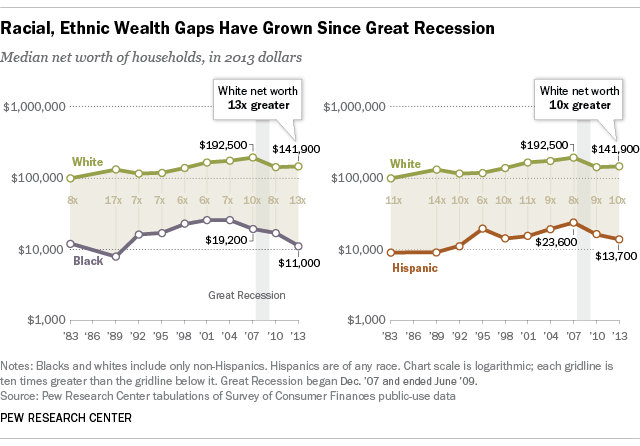Best of 2011 Recession Proof Companies Americans Move in with Relatives and Other Economic Stories
Post on: 29 Март, 2015 No Comment

U.S. CHANGES IN EMPLOYMENT, BY STATE
For those keeping track of unemployment in the U.S., The Economist posted this graph showing job gains and losses by state. based on Bureau of Labor Statistics data:
According to the BLS. as of January 2011, the U.S. unemployment rate had dropped to 9.0%. The lowest unemployment rate is in North Dakota, at 3.8%, while the highest is still in Nevada, at 14.2%.
For the rest of the story CLICK HERE
___________________________________________________________________________________
Children are our most important resource. Everyone says it, but we don’t really mean it.
Exhibit one: the percentage of children under the age of 18 that live in poverty. In 2007, at the peak of our previous economic expansion, the child poverty rate was 18%. In 2009, it hit 20%. The figure below provides a look at child poverty rates in each state . New Hampshire had the lowest rate: 11%. Mississippi the highest rate: 31%. According to a recently released Census Bureau study, the 2010 national child poverty rate was 22%.
___________________________________________________________________________________
With fears of a new economic downturn, investors have become concerned about sales and profits of large companies. But there are companies that have already proven themselves in the recent recession. They also offer investors income through dividend. or are positioned well within global industries, or those that perform well in downturns. Using such characteristics, 24/7 Wall St. picked America’s recession-proof companies.
The most attractive stock investments for periods when GDP growth stalls are those of corporations that proved they could improve sales during the 2007-2009 recession. Many of these corporations have additional attractions. They often generate so much cash they can afford to pay large dividends. This gives investors yields when the value of many equities fall due to concerns about the economy and in a period that interest rates on bonds are near all-time lows.
Recession-resistant companies are also often part of recession-resistant industries. Many of these industries’ sales come from a number of countries around the world. Their sales may slow in the U.S. and Europe, but remain strong in emerging nations. Coke and P&G are examples of corporations in such industries. Other companies are in sectors whose products are used in almost any economic environment. Tobacco companies like Altria and Reynolds American are examples of these. Still other industries have companies that have appeal in an economic downturn. McDonald’s, which offers many meals for a few dollars, often prospers when people cannot afford fresh groceries or more expensive restaurants.
For the rest of the story CLICK HERE
___________________________________________________________________________________
EXECUTIVE SUMMARY
Without public debate or fanfare, large numbers of Americans enacted their own anti-poverty program in the depths of the Great Recession: They moved in with relatives. This helped fuel the largest increase in the number of Americans living in multi-generational households in modern history. From 2007 to 2009, the total spiked from 46.5 million to 51.4 million.
Living in a multi-generational household appears to be a financial lifeline for many. Although their adjusted incomes overall are lower, the poverty rate among people in multi-generational households is substantially smaller than for those in other households—11.5% vs. 14.6% in 2009, according to a new Pew Research Center analysis of Census Bureau data.
Moreover, the potential benefits of living in multi-generational households are greatest for the groups that have been most affected by the Great Recession. Among the unemployed, the poverty rate in 2009 was 17.5% for those living in multi-generational households, compared with 30.3% for those living in other households. Members of other economically vulnerable groups—young adults, Hispanics and blacks—who live in multi-generational households also experience sharply lower poverty rates than those in other households. 1
For the rest of the story CLICK HERE
___________________________________________________________________________________
INTERACTIVE GRAPH OF HISTORICAL INCOME GAINS
Via Shamus Khan, I found the Economic Policy Institute’s interactive graph that lets you see which Americans have earned most of the growth (or, more recently, suffered the losses) in U.S. incomes over time, based on IRS data (and reported in constant 2008 dollars):
For the rest of the story CLICK HERE
__________________________________________________________________________________
By Luisa Kroll and Kerry A. Dolan
Despite the stalled economy, the nation’s wealthiest are worth a combined $1.53 trillion, nearly equivalent to the GDP of our neighbor Canada. Their total wealth is up 12% in the year through August 26, when we took a snapshot of everyone’s net worth, meaning these affluent folks did slightly better than the markets; the S&P 500, for instance, was up 10% in that time.

But it’s not simply a case of the rich getting richer. The Forbes 400 gets more meritocratic over time. An all-time high 70% of this year’s list are self-made, up from 55% in 1997.
For the rest of the story CLICK HERE
___________________________________________________________________________________
In light of all the protesting and anger with corporate greed and government corruption, I thought it would be interesting to take a look at the wealthiest 1% (give or take a few percent) in this country. I went to Forbes’ website and check out their various list. Here are some interesting findings I pulled from it.
For the rest of the story CLICK HERE
___________________________________________________________________________________
HOW (NOT) TO DESCRIBE THE POVERTY NUMBER
The U.S. Census Bureau reported last week that there were 46.2 million people in poverty in 2010, out of a population of 305.7 million. That is 15.1%, or if you prefer whole numbers, call it 151 out of every 1,000.
Most news reports seem to prefer reducing the rate to a numerator of one — which makes sense since it uses the smallest whole number possible, for your mental image. In that case, you could accurately call it one out of every 6.6, but no one did. Like the Washington Post and NPR. most called it some version of “nearly one in six.” That’s OK, if you’re willing to call 15.1 “nearly 16.7.”
Using percentages, here’s the difference:














